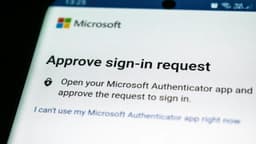What is Product Led Growth and How Does It Elevate Your Business?
Imagine a bustling marketplace brimming with buyers. Stalls festooned with brightly colored goods, each vendor vying for attention, each beckoning with promises of the best deal. In the market of business strategies, there's one stall that’s catching every keen entrepreneur's eye: Product Led Growth (PLG). This isn't the flashiest stall or the one with the loudest hawker. Instead, it's the stall where customers gather because the products simply speak for themselves. Welcome to the world of Product Led Growth!
What is Product Led Growth?
Picture this: instead of relying heavily on traditional sales pitches, advertising campaigns, or marketing gimmicks, your product itself becomes the primary driver of customer acquisition, expansion, and retention. That's the magic of Product Led Growth. PLG is a strategy where the product is the main vehicle for growth in a business. The product inherently delivers such substantial value to users that they are naturally inclined to adopt it, recommend it, and expand their usage over time.
In a product-led approach, users get a taste of the product without having to go through lengthy sales processes. They can immediately dive in and experience its benefits firsthand, making the product its own best advocate.
Why Should You Care About Product Led Growth?
The beauty of PLG lies in its simplicity and efficiency. Here’s why:
- Cost-Effective: Traditional marketing and sales strategies can be expensive. PLG reduces reliance on hefty marketing budgets since the product itself drives growth.
- Customer-Centric: PLG focuses on delivering exceptional value to users right from the start. This builds trust and loyalty at an early stage.
- Scalability: A product-led approach inherently scales well. As more users experience value and spread the word, growth can become exponential.
- Data-Driven Decisions: With PLG, businesses can gather direct feedback and usage data from users. This allows for continuous improvements and alignments with user needs.
How to Implement Product Led Growth?
Implementing PLG is like orchestrating a symphony. Each section of the orchestra (your product) must play in harmony. Here’s how you can set the stage:
1. Build an Outstanding Product
This is the foundation. Your product must solve a real problem and do it efficiently. It should be intuitive, easy to use, and deliver value quickly. The goal is to create a “wow” moment for users as soon as they start using it. Constant iteration and improvement based on user feedback are crucial here.
2. Offer a Free Trial or Freemium Model
Let users experience the product without friction. By providing a free trial or a freemium version, you lower the barriers to entry. This allows users to see the benefits firsthand before committing financially. Many successful companies like Dropbox have thrived using this model.
3. Onboarding and User Education
A seamless onboarding process is essential. Help users get up to speed quickly with guided tours, tutorials, and in-app tips. The aim is to lead users to that “aha” moment where the value becomes apparent. Continuous user education through webinars, knowledge bases, and dedicated support can also enhance user experience and retention.
4. Foster User Engagement and Retention
Retention is just as important as acquisition. Keep users engaged with regular updates, new features, and improvements. Use personalized communications and feedback loops to keep users invested in your product. Community building around your product can also foster a sense of belonging and loyalty.
5. Analyze and Iterate
Leverage analytics to monitor how users interact with your product. Identify pain points, drop-off stages, and frequently used features. Use this data to make informed decisions and iterate on your product. The goal is continuous improvement.
6. Encourage Referrals and Virality
Satisfied users can be your best marketers. Encourage them to share the product with their network through referral programs, incentives, or built-in sharing features. Word-of-mouth recommendations from happy users can drive substantial organic growth.
Real-World Examples
Several well-known companies have successfully adopted PLG and become leaders in their sectors. A few examples include:
- Slack: This team collaboration tool is a prime example of PLG. By offering a freemium model and a user-focused onboarding process, Slack has grown into a staple for businesses worldwide.
- Zoom: This video conferencing giant exploded in popularity by allowing users to easily sign up and start hosting meetings for free. The product’s simplicity and reliability spoke for themselves.
- Atlassian: The software company behind products like Jira and Confluence adopted a PLG strategy by providing valuable tools tailor-made for development and project management teams without needing extensive sales processes.
Challenges of Product Led Growth
Embracing PLG is not without its challenges. Here are a few obstacles you might encounter:
- Initial Investment: Building an exceptional product requires significant investment in R&D and user experience design.
- Competitive Market: In a market overflowing with products, standing out requires exceptional value and user-centric features.
- Continuous Improvement: PLG demands constant iteration based on user feedback, which requires agility and responsiveness.
Despite these challenges, the potential rewards are substantial. Companies that get PLG right can create sustainable, organic growth that’s driven by satisfied, loyal customers.
Product Led Growth is more than just a strategy; it’s a philosophy that places the user at the heart of the business. It’s about creating a product that resonates so deeply with users that it becomes the silent yet powerful engine of growth. By focusing on delivering exceptional value, reducing friction, and continually improving based on user feedback, businesses can harness the potential of PLG to elevate their success.
As you navigate the bustling marketplace of business strategies, allow your product to take the lead. Let it be the magnet that draws customers in, keeps them engaged, and turns them into your biggest advocates. In the world of PLG, the product isn’t just part of the strategy—it is the strategy.












